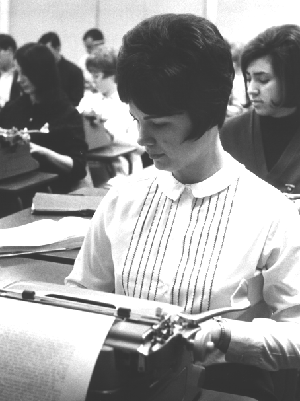Amorose, Thomas. (2000). WPA work at the small college or university: Re-imagining power and making the small school visible. Writing Program Administration, 23, 85-103.
Anderson, Daniel, Atkins, Anthony, Ball, Cheryl, Millar, Krista. H., et al. (2006). Integrating multimodality into composition curricula: Survey methodology and results from a CCCC research grant. Composition Studies, 34, 59-84.
Association for the Study of Higher Education (ASHE). (2005). Effects of liberal arts colleges on intellectual and personal development. ASHE Higher Education Report, 31, 45-58.
Bamberg, Betty. (1997). Alternative models to first-year composition: Possibilities and problems. Writing Program Administration, 21, 7-18.
Bergman, Linda S., & Edith M. Baker. (2006). Composition and/or literature: The end(s) of education. Urbana: NCTE.
Chase, Geoffrey. (1997). Redefining composition, managing change, and the role of the WPA. Writing Program Administration, 21, 46-54.
Connelly, Peter J., & Donald C. Irving. (1976). Composition in the liberal arts: A shared responsibility. College English, 37, 668-670.
Connors, Robert. J. (1997). Composition-rhetoric: Backgrounds, theory, and pedagogy. Pittsburgh: University of Pittsburgh Press.
Hartzog, Carol P. (1986). Composition and the academy: A study of writing program administration. New York: MLA.
Jorgenson, Haley. (2004). Collaboration – Key to technology integration for small colleges. Distance Education, 8, 5-7.
Kaplan, Andrew. (1992). The new disciplines of liberal education. Curriculum Inquiry, 22, 47-65.
Kirtley, Susan. (2005). Students’ views on technology and writing: The power of personal history. Computers and Composition, 22, 209-230.
Lloyd, Donald J. (1955). English and the liberal arts tradition. College English, 17, 100- 104.
Lunsford, Andrea. (2006). Writing, technologies, and the fifth canon. Computers and Composition, 23, 169-177.
Peek, Robin. (2005). Web publishing 2.0. Information Today, 22, 17-18.
Rea, Alan, & White, Doug (1999). The changing nature of writing: Prose or code in the classroom. Computers and Composition, 16, 421-436.
Reid, E. Shelley (2003). A changing for the better: Curriculum revision as reflective practice in teaching and administration." Writing Program Administration, 26,10- 27.
Rutz, Carol. (2006). Delivering composition at a liberal arts college: Making the implicit explicit. In K. B. Yancey (Ed.), Delivering college composition: The fifth canon (pp. 60-71). Portsmouth, NH: Boynton/Cook.
Selber, Stuart. (2004). Multiliteracies for a digital age. Carbondale: Southern Illinois University Press,
Selfe, Cynthia (Ed.). (2008). Multimodal composition: Resources for teachers. Cresskill, NJ: Hampton Press,
Selfe, Cynthia, & Takayoshi, Pamela. (2008). Thinking about multimodality. In C. Selfe (Ed.), Multimodal composition: Resources for teachers (pp. 1-16). Cresskill, NJ: Hampton Press.
Selfe, Richard. J. (2008). Sustaining multimodal composition. In C. Selfe (Ed.), Multimodal composition: Resources for teachers (pp. 167-180). Cresskill, NJ: Hampton Press.
Sorapure, Madeline. (2006). “Between modes: Assessing student new media compositions. Kairos, 10(2), 1-15.
Taylor, Rebecca. (2004). Preparing WPAs for the small college context. Composition Studies 32, 53-73.
The University of Findlay Undergraduate Catalog. (Fall 1997).
Turnley, Melinda. (2005). Contextualized design: Teaching critical approaches to web authoring through redesign projects. Computers and Composition 22, 131-148.
Vandenberg, Peter. (1994, July). An economy of class differential: Productivity in composition studies. Paper presented at the Annual Penn State Conference on Rhetoric and Composition, University Park, PA.
Veysey, Laurence. R. (1965). The emergence of the american university. Chicago: University of Chicago Press.
Yancey, Kathleen. B. (2004). Looking for sources of coherence in a fragmented world: Notes toward a new assessment design. Computers and Composition, 21, 89-102.
